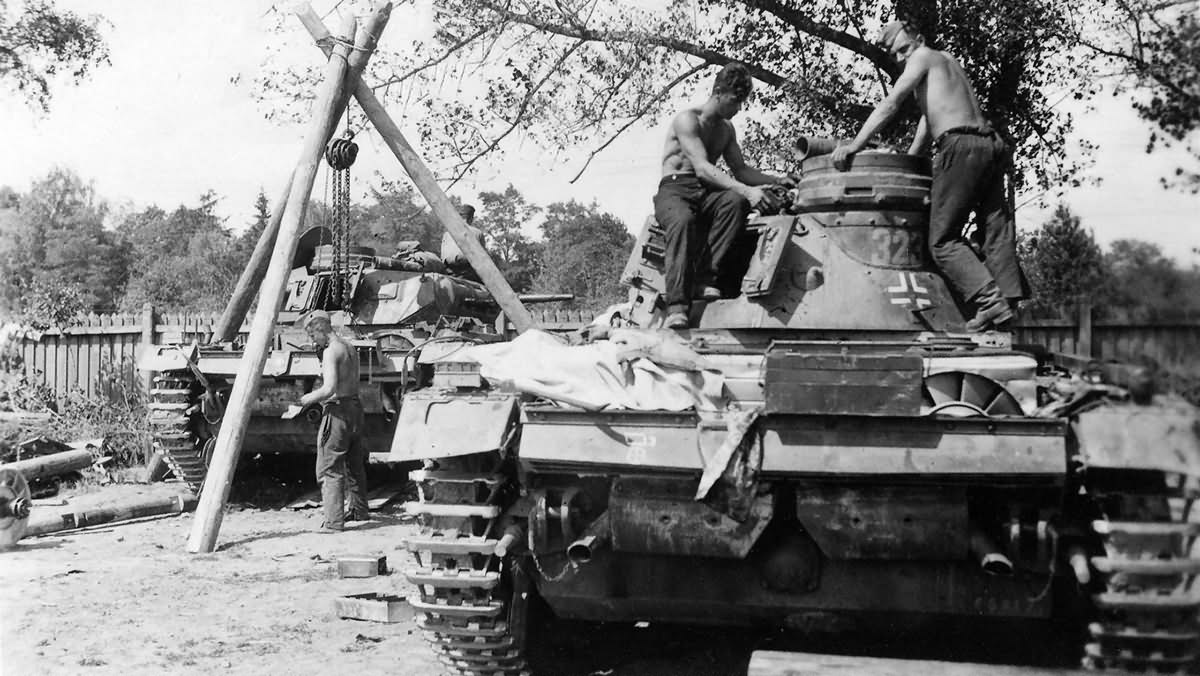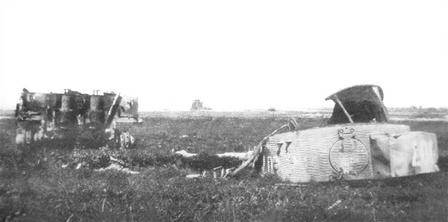
My previous posts on this subject looked at the claims of two panzer aces made on the 5th of July 1943 and the claims for Wittmann for 7 and 8 July. Let me address a couple of more claims credited to Michael Wittmann (1914-1944) and Franz Staudegger (1923-1991).
- It is claimed that Staudegger killed 22 T-34s on 7 or 8 July.
- Including two tanks in close combat.
- Agte’s book does note two tanks killed in close action in the battle of 8 July but this was done by the infantry of the 2nd SS (Deutschland) PzGr Rgt (Agte, page 103). This was in addition to the 22 T-34s Staudegger killed.
- But Agte does note the two T-34s killed in close action by Staudegger on the 5th, crediting him with 24 kills for the battle (Agte, page 128).
- At the village of Psyolknee.
- Agte does not claim it was at Psyolknee.
- But these people do (and they date the battle 7 July):
- https://ww2gravestone.com/tiger-1-germany-t-34-soviet-union/
- https://www-d0.fnal.gov/~turcot/Armour/tiger.htm
- http://military.wikia.com/wiki/Franz_Staudegger
- As does many other sites (just search Staudegger & Psyolknee)
His actual Knight’s Cross submission says 8 July (Agte, page 105), so not sure where the 7 July date comes from. Usually the sources that mention the 7 July date also mention the village of Psyolknee. Well, I have the 1:50000 scale maps, and I cannot find a village anywhere called Psyolknee. Have no idea where that name comes from (actually let me guess…several kilometers north of them was the river the Psel. It could also have been transliterated as Psyol. Not sure where the “knee” comes from).
The story is that his unit went off to the NW leaving him in Teterivino. There was then an attack by 50-60 tanks from the NE and he drove out of Teterivino, engaged them alone, but with the 3rd SS Panzer Grenadier Regiment in the area and also engaged. He killed 17 tanks in two hours. The Soviet armor withdrew. He then drove after them, ran across them in a hollow and destroyed five more, running out of ammo. All were T-34s.
So, which Soviet unit was attacking on 8 July to the NE of Teterivino with 50-60 tanks?
Well, as reported in my book (Kursk, page 622) the LSSAH panzer group attacked to the northwest out of Teterevino (map grid 3050). Most of this force became embroiled with a fight with parts of the XXXI Tank Corps, specifically the 100th Tank Brigade. I note that the assault gun battalion, reinforced by the 2nd SS PzGr Rgt was sent to Luchki (map grid 2546) to guard against a new tank threat from the area northeast of Teterevino (probably the X Tank Corps, but it could have been the newly arriving II Tank Corps). I do have maps from the SS Panzer Corps (page 624) and the XXXI Tank Corps (page 626) for that day in the book. Luchki is actually SW of Teterevino (north). Note that there is a second Teterevino on the map at map grid 3340. They are only around 10 kilometers from each other. I also have a map of the X Tank Corps positions around Prokhorovka and the Psel River for 1700 on 7 July and 2100 on 8 July (page 627).
- The SS Panzer Corps map for 8 July shows Das Reich SS PzGrD operating in Teterevino (actually in both of them) — see page 624
- XXXI Tank Corps is definitely not near Teterevino — see page 626
- The X Tank Corps is to the north and northeast of Teterevino, with the 178th Tank Brigade being the closest — see page 627.
So where was the X Tank Corps on the 8th? Well, the unit records I have don’t help a lot here. They specifically claim that on the July 7 at 1700 the corps was in the area of Prokhorovka along the following line (TSAMO, Fond: 3410, Opis: 1, Delo: 17):
- 178th Tank Bde: The bushes–ht. 252.4–the brick;
- 183rd Tank Bde and self-propelled gun rgt; the road from Prokhorovka to the southeast—northern outskirts of Lutovo (3957)–the upper reaches of the gullies 1 km south of Prokhorovka (4156);
- 11th Mech Bde with a mortar rgt: ht. 230.5–the road junction 2 km northeast of ht. 230.5;
- The 186th Tank Bde forms the reserve in the area of Litovka (4261)-Borchevka (4259). this is north of Prokhorovka.
By 2100 on 8 July the situation was as follows:
- 11th Mech Bde with a mortar rgt: Krasnyi Oktiabr (2758)–Prokhorovka (2857)–Vasilyevka (3056);
- Note that there are two Prokhorovka’s on the map, one at 2857 on the Psel River and the larger and more famous one at 4057. They are 12 kilometers apart. This unit is clearly on the Psel River.
- 183rd Tank Bde with a SP gun rgt: the southern outskirts of Kruglik–southern outskirts of Kalinovka;
- This is opposite the 48th Panzer corps.
- 178th Tank Bde with an AT art rgt: the southern spur of the gully south of Andreyevka (3256?…on the Psel river?) – northern slopes of ht. 240.6
- 186th Tank Bde: Situation unchanged
Now you kind of need to look at the 1:50000 scale maps of the area to sort this out (I do have them in my book). I will place the grid coordinates of every named place in their discussion, as they can be mapped out on graph paper (i.e. 3350 is the 33 kilometer on the north-south line and 50 kilometer on the east-west line). But…..we can probably shorten the discussion by looking at the unit strength and losses. The July 7 the 10th Tank Corps had:
- 186th Tank Bde; 32 T-34s, 21 T-70s
- 183rd Tank Bde: 32 T-34s, 22 T-70s
- 178th Tank Bde: 32 T-34s, 21 T-70s
- 1450th SP Art Rgt: 9 SU-76s, 12 SU-152s
- Elsewhere: 3 T-34s
Now it states for the Corps that losses from 7 – 11 July were 515 killed, 1,124 wounded, 25 guns, 16 AT rifles, 10 cars, 2 tanks, 4 mortars and 57 machine guns (page 10 of TSAMO, Fond: 3410, Opis: 1, Delo: 17). Also note Fond: 3410, Opis: 1, Delo: 14, page 5: X Tank Corps losses from 7-12 July 1943: 515 KIA, 1,124 WIA, 7 76mm, 18 45mm, 4 mortars, 57 machineguns, and 2 T-34s. The First Tank Army (primarily opposite 48th Panzer Corps) started reporting the X Tank Corps on 9 July on two of its tanks brigades (identified in a 10 July report at the 183rd and 186th tank brigades). We have no reports on the 178th Tank Brigade until we receive a personnel loss report from the First Tank Army for 5-19 July. The 178th Tank Brigade lost 34 KIA and 134 WIA for this period. On 15 July the 10th Tank Corps, which had driven into Tolstoye Woods, had a reported tank strength of 110 tanks: 1 KV, 63 T-34s and 45 T-70s (the math error is in the original). So all indications are that no tank brigade from this unit was seriously shot up on the 8th. If one was, it would have had to been the 178th Tank Brigade.
So what is one to do? It appears that while the X Tank Corps three brigades were in the area on the 7th, they were moving over to the 48th Panzer Corps sector and never did attack towards Teterevino. Clearly the German claim of 50 to 60 tanks would indicate one full strength Soviet tank brigade. None of their tank brigades appear to have taken any significant losses at this time. I gather most of the losses were taken by their mechanized brigade, which remained in the Prokhorovka area after the rest of the tank corps had moved over to the northwestern flank of the 48th Panzer Corps.
Lets briefly also look at the XXXI Tank Corps.
- According to Operational Report #206, 1st Tank Army, 0700 July 8, 1943: XXXI Tank Corps with the attached 192nd Tank Bde is defending the line Krasnaya Polyana–ht. 252.5–western outskirts of Malye Mayachi–western half of Greznoye–ht. 227.8. From 0600 the corps is fighting with enemy tanks where have broken through towars ht. 239.6. Enemy aircraft, in groups of 20-30 planes, is severely bombing the corps’ units.
- According to Operational Report #207, 1st Tank Army, 1800 July 8, 1943: XXXI Tank Corps with the 192nd Tank Bde; during the day fougth along the line Krasnaya Polyana–Malye Mayachi–Greznoye, repelled the enemty’s attempts to break through to Veselyi. By 1500 the enemy had broken through our front in the direction of Grenzye and Kochetovka from the area of ht. 224.5. Simultaneously, 100 enemy tanks launched an attack in this direction from the area of Veselyi. The fighting continues. Losses for July 7 are 25 tanks knocked out or burned personnel losses are being calculated.
- According to Operational Report #208, 1st Tank Army, 1900 July 9, 1943: XXXI Tank Corps, with the 59th Ind Tank Rgt and the 4th AT Art Rgt defended the line along the western bank of the Solotinka River on the Sukhoe Solotino sector–ht. 188.1, with the mission of preventing a breakthrough by the enemy’s tanks in the direction of Kochetovka–the Oboyan highway…..There is no information on losses at this time.
- Also according to Operational Report #208, 1900 July 9, 1943: Two brigades of the X Tank Corps reached the fighting at 1600 and were ordered to deploy and attack the enemy, as to halt his further advance to the north and northwest, and to close the break in the line….
- Operational Report #210, 1900 July 10, 1943:
- X Tank Corps: “On July 9 the corps lost 2 T-34s burned.”
Determining the locations and actions of the II Tank Corps on the 8th and 9th of July are somewhat of a challenge. We have detailed daily reports of actions and losses starting the 10th.
- At 0700 on July 10 the enemy attacked the Komsomolets Sokhoz (3253). II Tank Corps is defending the line (excl.) Vasilevka (3056)–Andreyevka (3256) –Mikhailovka (3357) –ht. 241.6–the railroad crossing 2 km north of Belenikhino (3350), with the mission of preventing an enemy advance on Prokhorovka.
- This does stretch the corps from the Psel River to in front of Prokhorovka to opposite the Das Reich SS Division.
- The same report (TSAMO, Fond: 3407, Opis: 1, Delo: 108, pages 195-216) does give strength and losses.
- 99th Tank Bde: 31 T-34s (15 ready for action, 12 knocked out and 4 undergoing repair), 21 T-70s (16 ready for action, 4 knocked out, and 4 broken down)
- 26th Tank Bde: 11 T-34s (3 broken down, 6 knocked out); 4 T-70s (3 broken down, 3 knocked out). In all there are 20 T-34s and 20 T-70s.
- 169th Tank Bde: 31 T-34s (5 broken down, 3 knocked out); 19 T-70s (1 knocked out).
- 15th Guards Heavy Tank Rgt: 13 Churchills (2 broken down, 2 knocked out).
- So based upon losses it is possible on 8 July that 99th Bde could have been engaged (and lost 16 tanks) or the 26th Tank Bde could have been engaged (and lost 9 tanks) or the 169th Tank Bde could have been engaged (an lost 4 tanks). Of course, this is the strength as of 0700 on 10 July. The incident in question happened on the 8th.
- My book notes that:
- The II Tank Corps was originally ordered to Korocha on the 6th (page 496).
- It was alerted the night of 6/7 July (at 2345) and by 0800 on 8 July had concentrated in the Kamyishevka and Pravorot area (page 497) or Pravorot (4052) and Krasnoye (4555) (see page 534)..
- It then concentrated in the Vinogradovka area (3650) on the morning of the 8th after its 200 kilometer march on the 7th (page 534).
- It attacked on the afternoon of the 8th (page 534).
- The II Tank Corps lost at least 31 tanks on the 8th (page 534).
- Its attack on the 8th is described in depth on page 629.
- The corps attacked at 1320 (Moscow time).
- Lost more than 30 tanks.
- Between 2100 and 2200 one the brigades of the tank corps attacked height 258.2, which was occupied by the Soviet 183rd Rifle Division.
- I do have an interview on that page from a tank commander in the 99th Tank Bde (Senior Sergeant Petr Petrovich Ivanov, born 1924, interviewed 1999).
- “…Our tank brigade moved forward in two battalion columns followed by one battalion and motorized rifle units. The Germans started shelling us, but we got a command to move faster. We saw the German tanks when we were about two kilometers away from them. We continued moving closer….When the German tanks and artillery started their massive fire and one of their shells hit my tank turret, my mood dropped, but I continued moving forward in the first line of the brigade. The tank battle lasted for several hours. We could not move forward. Actually, we had to retreat some because the Germans started to go around our tank brigade from the flanks. Then I got a little bit scared. On top of everything, an artillery shell hit the tank. The shell did not penetrate the tank, but a piece of armor, chipped from inside of the tank because of the shell, wound the gunner in the shoulder….
- Note this discussion is in the section about the fighting by Das Reich.
- I have it in my engagement sheet on page 642 as opposite Das Reich.
- Regardless, it does not look like the engagement or the unit that Staudegger engaged.
The fourth and final candidate is the V Guards Tank Corps (as the II Guards Tank Corps has good records and clearly was not a candidate, see the tank corps map in my book on page 636). We actually have decent records from the V Guards Tank Corps for the 8th.
- At 1030 the corps launched a counterattack and reached the line Sobachevskii (3044)–Kalinin (3246)–Belenikhino (3348)
- This would put it opposite the Das Reich SS Division.
- More detail positions by Tank Bde are provided by Combat Report #0112, 2200, July 8, 1943: (TSAMO, Fond: 3403, Opis: 1, Delo 18),
- 20th Gds Tank Bde = 2 km south of Sobachevskii
- 22nd Gds Tank Bde = Belenikhino, where it was halted by intense tank and antitank gun fire.
- This is the report that incorrectly states: “II Tank Corps, on the right, was concentrating in the Vinogradovka area, but did not attacking during the day.”
- Losses for July 8 are:
- 20th Gds Tank Bde = 14 T-34s and 7 T-70s
- 21st Gds Tank Bde = 14 T-34s and 2 T-70s
- 22nd Gds Tank Bde = none (it says that)
- Tank in line on the evening of July 8:
- 20th Gds Tank Bde = 7 T-34s, 7 T-70s
- 21st Gds Tank Bde = 7 T-34s, 7 T-70s
- 22nd Gds Tank Bde = 7 T-34s, 5 T-70s
- Souce: TSAMO, Fond: 3403, Opis: 1, Delo: 18a
- There is also the 48th Guards Tank Rgt with the unit which started the battle with 21 Churchills. On the morning of July 7 it was still reporting 21 Mk-4s. At 2200 8 July it was reporting 5 Churchills..
So in conclusion…..
- It does not appear to have been the X Tank Corps (unless they did an attack and only lost two tanks, or they did an attack, lost a lot of tanks and did not report it…at all, ever);
- If it did attack, the most likely candidate is the 178th Tank Brigade.
- It does not appear to have been the XXXI Tank Corps (unless a tank brigade detached from the corps, moved many kilometers across the front of the SS Panzer Corps advance and came down from the NE…but this seems extremely unlikely).
- It does not appear to be from the II Tank Corps; although it could have been. This is the best possible candidate.
- The 99th Tank Bde had lost at least 16 tanks, but appears to have been engaged with the combined arms force from Das Reich.
- The 26th Tank Bde had lost at least 9 tanks (at least 6 T-34s).
- The 169th Tank Bde does not appear to have been seriously engaged (at least 4 tanks lost, 3 were T-34s).
- And the V Guards Tank Corps on the 8th was clearly facing Das Reich and was to the left (south) of II Tank Corps.
- Therefore, the most likely candidate is the 26th Tank Bde, which we don’t have location and action data for. It lost at least 9 tanks on the 8th (6 T-34s, 3 T-70s).
So which Soviet unit attacked there and what were their losses? Does anyone out there have better records of the II Tank Corps actions on the 8th?
P.S. The picture is of a Tiger I at the Battle of Kursk: Source: https://www.warhistoryonline.com/guest-bloggers/franz-staudegger-german-tiger.html




 Armies have historically responded to the increasing lethality of weapons by dispersing mass in frontage and depth on the battlefield. Will combat see a new period of adjustment over the next 50 years like the previous half-century, where dispersion continues to shift in direct proportion to increased weapon range and precision, or will there be a significant change in the character of warfare?
Armies have historically responded to the increasing lethality of weapons by dispersing mass in frontage and depth on the battlefield. Will combat see a new period of adjustment over the next 50 years like the previous half-century, where dispersion continues to shift in direct proportion to increased weapon range and precision, or will there be a significant change in the character of warfare?



